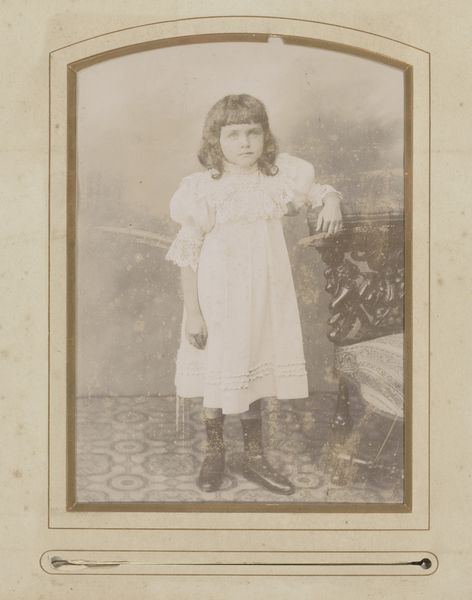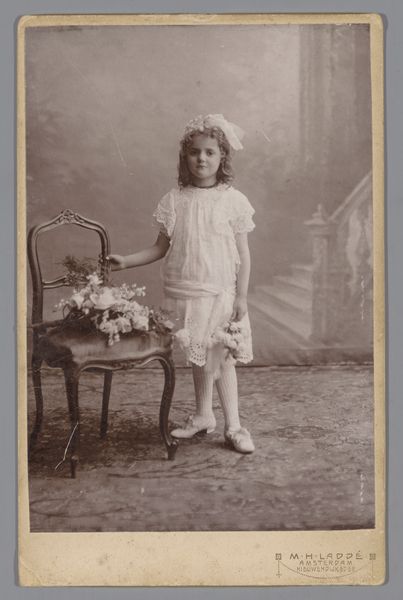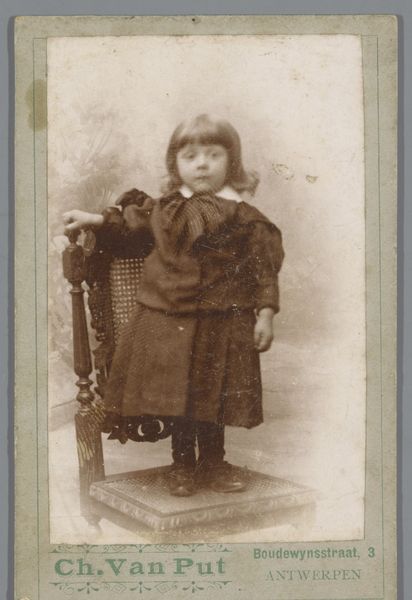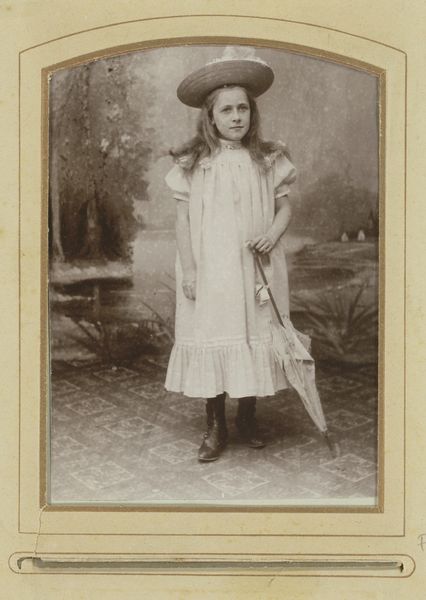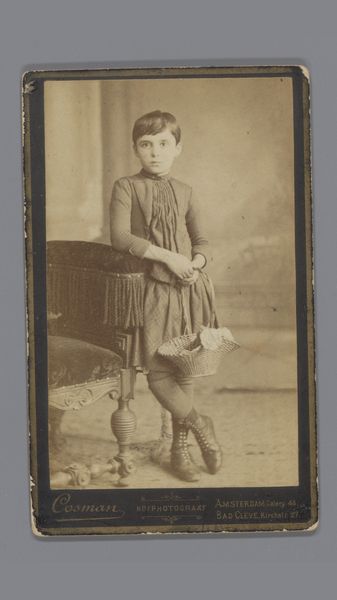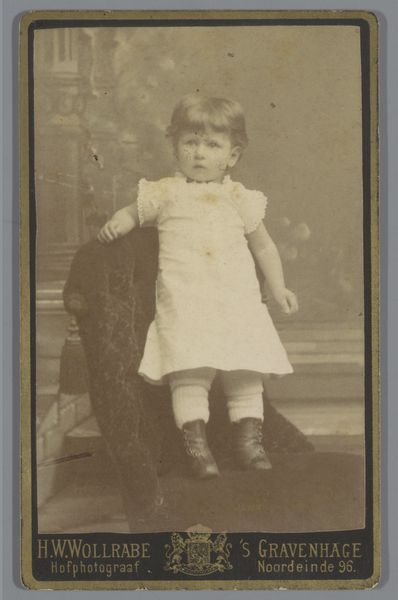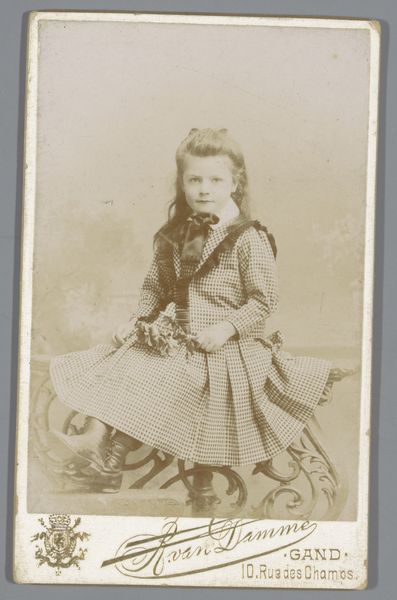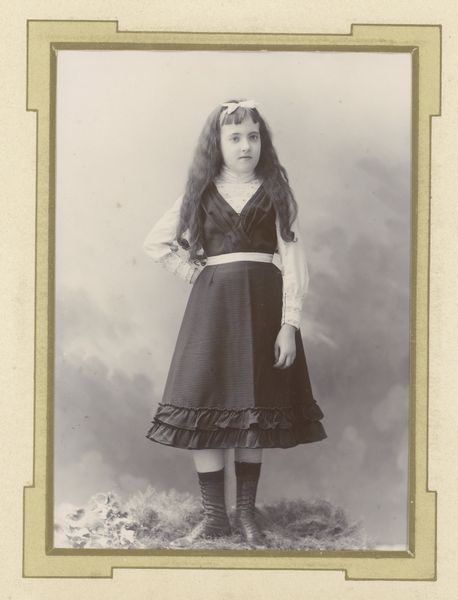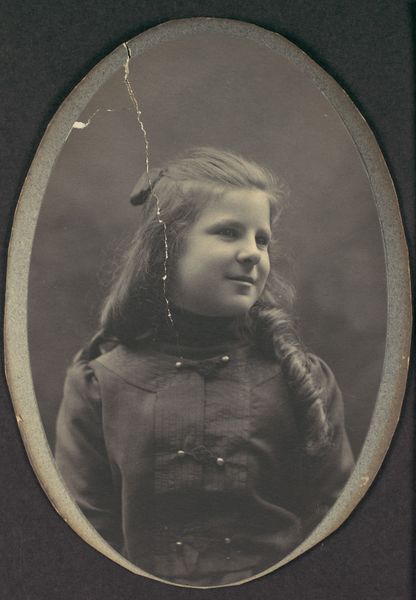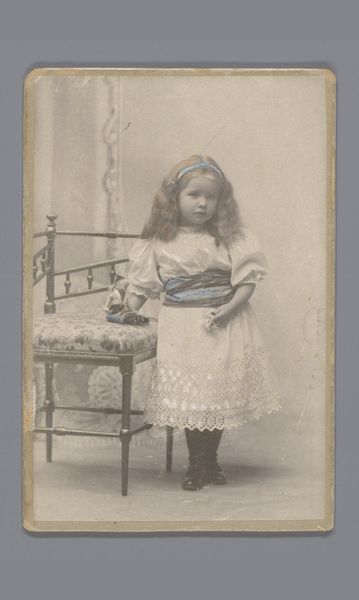
photography, gelatin-silver-print
#
portrait
#
photography
#
coloured pencil
#
gelatin-silver-print
#
19th century
#
watercolour illustration
Dimensions: height 104 mm, width 64 mm
Copyright: Rijks Museum: Open Domain
Curator: We are looking at “Portret van een onbekend meisje bij een stoel” attributed to Joseph Beff, believed to be made sometime between 1902 and 1920. It's a gelatin-silver print portrait. Editor: My initial reaction is one of somberness. The grey tones evoke a quiet, perhaps constrained atmosphere. Note how the figure is placed in the center, but subtly off-balance with the chair. Curator: It's crucial to understand the context of early 20th-century photography. Portrait studios provided a service, democratizing image-making for the middle class. This image represents the rise of photographic portraiture's societal role and its cultural effect on social norms. Editor: Structurally, I am drawn to the juxtaposition of textures: the smoothness of the girl's dress against the rough wicker of the chair, the crispness of her lace collar versus the softness of the painted backdrop. How does this all coalesce formally? Curator: I interpret that juxtaposition as the societal constraint of its time, it depicts controlled representation. The sitter has little autonomy as it adheres to its cultural standards. The dress is of the current style, thus revealing social standards. The neutral face does not indicate anything else but what has been displayed. Editor: That's fascinating, because one might argue, then, that the slightly windswept hair could function as a gesture of rebellion against that very control. Semiotically, it introduces a whisper of unruly freedom against the highly regulated portrait space. Curator: Yes, it could challenge its composition and offer some level of emotional effect through elements that do not provide complete rigidity. Beff's piece stands as a mirror, demonstrating what photographic conventions were about at that time. The use of photography played into how social and class values were solidified. Editor: In that case, analyzing this photograph prompts us to investigate these interactions that demonstrate art in public culture at the time, and how it has influenced our perceptions. Thank you for these thoughts. Curator: Indeed, appreciating the photograph's contribution helps us explore its cultural value as art.
Comments
No comments
Be the first to comment and join the conversation on the ultimate creative platform.

